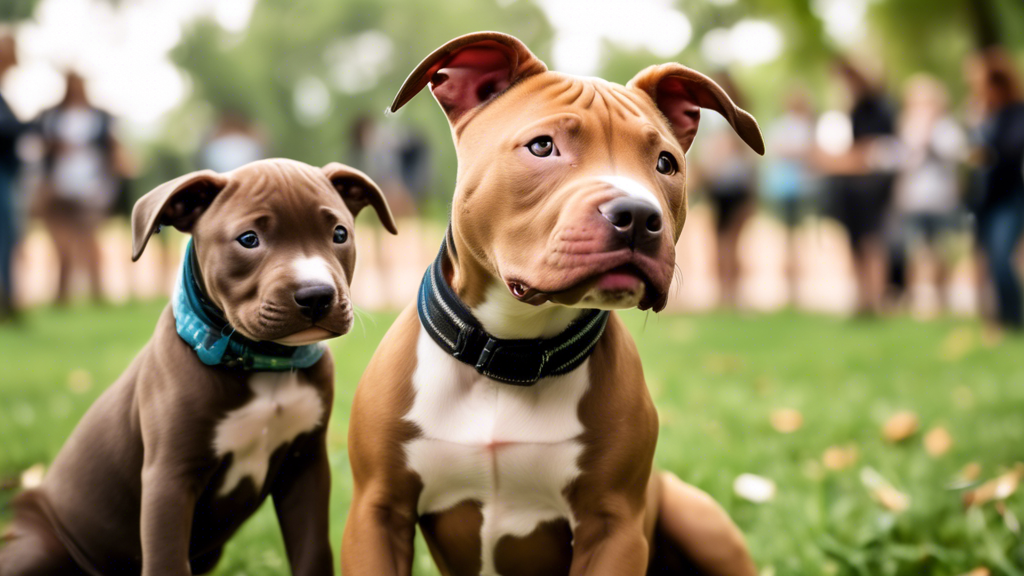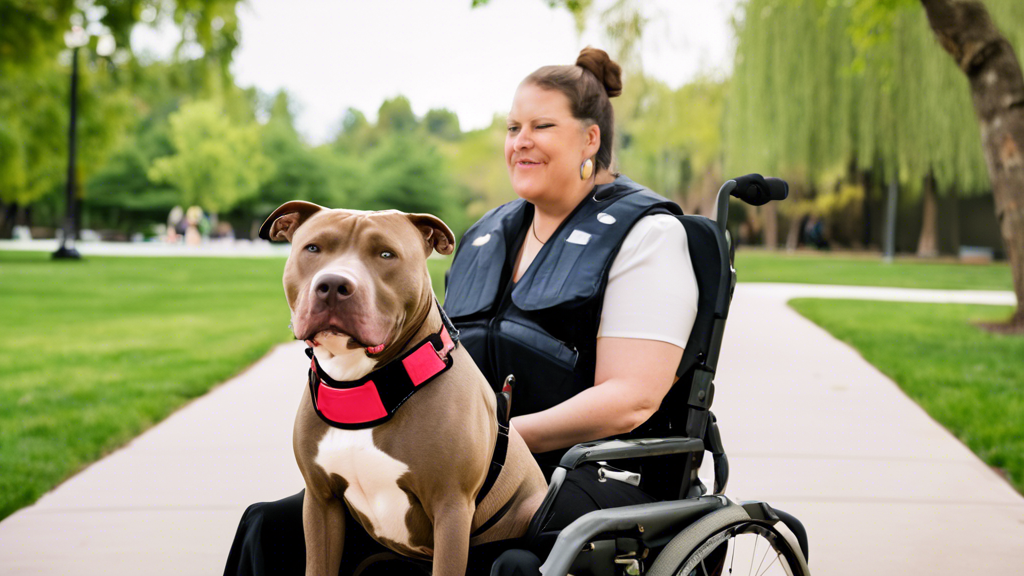**Unlocking the Therapeutic Potential of Pitbulls: A Comprehensive Guide to Training for Therapy Work**
In recent years, the perception of pitbulls has evolved, with increasing recognition of their inherent qualities for therapeutic purposes. This article delves into the world of pitbull training for therapy work, providing a comprehensive guide to harnessing their unique abilities for the benefit of clients.
We will explore the specific traits that make pitbulls suitable for such demanding work, highlighting their exceptional emotional sensitivity, loyalty, and physical attributes. Moreover, we will unveil the extensive training roadmap from puppyhood to advanced therapy skills, covering every crucial step with expert guidance. Along this journey, we will illuminate the nuances of socialization, obedience, and specialized therapy techniques, equipping you with the tools to confidently prepare your pitbull for a fulfilling career as a therapeutic companion.
**Pitbulls for Therapy: Potential and Benefits**
Pitbulls, often perceived as a breed associated with aggression, possess a surprising and commendable potential for therapy work. Their unique traits make them well-suited for providing emotional and physical support to clients:
**Gentle Nature:** Despite their muscular appearance, pitbulls are inherently gentle and affectionate dogs. Their strong bonds with humans allow them to empathize deeply and offer comfort.
**Emotional Support:** Studies have shown that interacting with pitbulls triggers a release of oxytocin, a hormone associated with love and bonding. This can reduce stress, anxiety, and isolation in individuals.
**Physical Therapy:** Pitbulls’ strong physique and eagerness to please make them excellent companions for physical therapy exercises. Their weight can provide stability and resistance, while their playful nature can engage patients and improve their motivation.
**Special Considerations:**
While pitbulls have great potential for therapy work, it’s crucial to acknowledge some special considerations:
**Breed Stigma:** The stigma associated with pitbulls can create hurdles for their acceptance in therapy settings. It’s important to educate potential clients and staff about the true temperament of these dogs.
**Proper Training:** As with any breed involved in therapy work, pitbulls require rigorous and specialized training to ensure their safety and effectiveness. They must be socialized extensively, trained in obedience commands, and taught advanced skills such as emotional support and physical therapy techniques.
**Responsible Ownership:** Owners of pitbulls intended for therapy work must be dedicated to their training, socialization, and overall well-being. They must ensure that the dogs receive adequate exercise, attention, and veterinary care.
The #1 Free Source for Pitbull & Bully Pedigrees!

Step-by-Step Training Guide for Pitbull Therapy Work
Step 1: Socialization
- Early Exposure: Introduce your pitbull to diverse environments, people, and animals from a young age.
- Controlled Interactions: Supervise all interactions and gradually increase exposure as your pitbull gains confidence.
- Positive Reinforcement: Reward your pitbull for calm and appropriate behavior during socialization exercises.
Step 2: Obedience Training
- Basic Commands: Teach your pitbull basic commands such as sit, stay, come, and heel.
- Consistency: Practice commands regularly and in different settings to ensure obedience.
- Positive Reinforcement: Reward your pitbull with treats, praise, or play for performing commands correctly.
Step 3: Advanced Skills Training
- Impulse Control: Train your pitbull to resist distractions and follow commands even when excited or anxious.
- Down-stay: Teach your pitbull to lie down and remain relaxed even when approached or given distractions.
- Passive Leash Walking: Train your pitbull to walk calmly on a leash, without pulling or lunging.
Step 4: Specific Challenges
- Reactivity: Some pitbulls may show reactivity towards other dogs or people. Use positive reinforcement and gradual desensitization techniques to address this behavior.
- Separation Anxiety: If your pitbull experiences separation anxiety, provide them with a safe and secure environment and practice leaving them alone for short periods.
- Hyperactivity: Engage your pitbull in regular exercise and provide them with plenty of mental stimulation to manage hyperactivity.
Step 5: Reinforcement and Evaluation
- Regular Reinforcement: Consistently reward and praise your pitbull for desired behaviors to reinforce positive habits.
- Professional Evaluation: Once your pitbull has progressed, consider seeking an evaluation from a certified dog trainer or therapist to assess their suitability for therapy work.
- Ongoing Training: Therapy work requires ongoing training and maintenance to ensure a high level of performance and client safety.
**Conclusion**
Training a pitbull for therapy work is a rewarding and impactful experience that can profoundly benefit both the dog and the clients they serve. By following the comprehensive step-by-step guide outlined in this article, you can equip your pitbull with the essential skills and temperament to excel in this role. Remember, consistency, patience, and positive reinforcement are paramount in shaping a therapy dog’s exceptional character.
As your pitbull progresses through the training program, monitor their development closely and provide individualized guidance to address any specific challenges. With dedication and commitment, you can unlock the incredible potential of pitbulls as therapy companions, bringing solace, joy, and meaningful connections to those in need.
The benefits of therapy pitbulls extend far beyond the immediate impact on clients. By showcasing the positive qualities of these often-misunderstood dogs, we challenge stereotypes and promote responsible pet ownership. Therapy pitbulls serve as ambassadors for their breed, demonstrating their gentle and loving nature, while inspiring greater compassion and acceptance towards all dogs. By embracing the transformative power of pitbulls for therapy work, we foster a more inclusive and empathetic society where all animals have the opportunity to make a positive difference in the world.











Leave A Comment